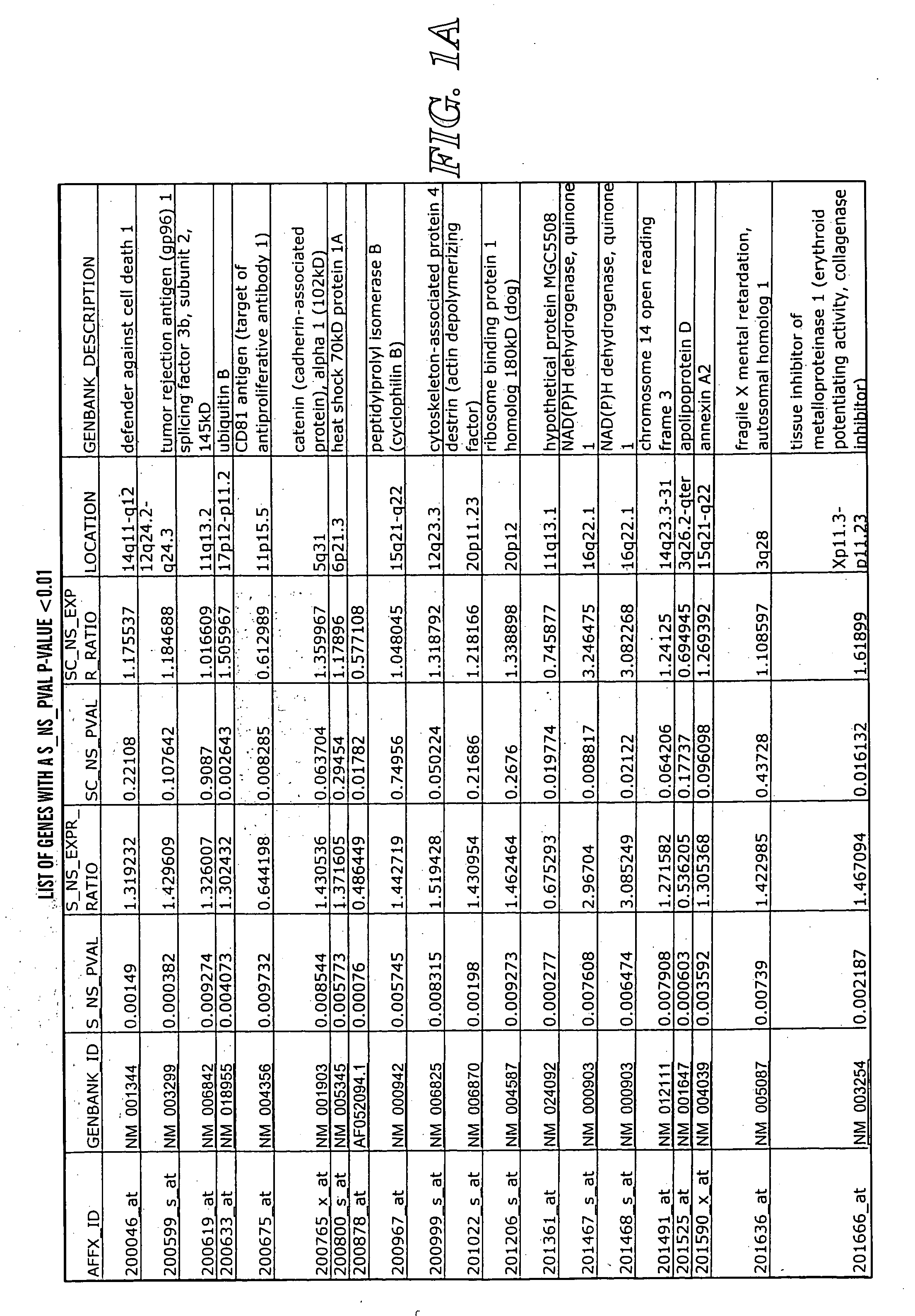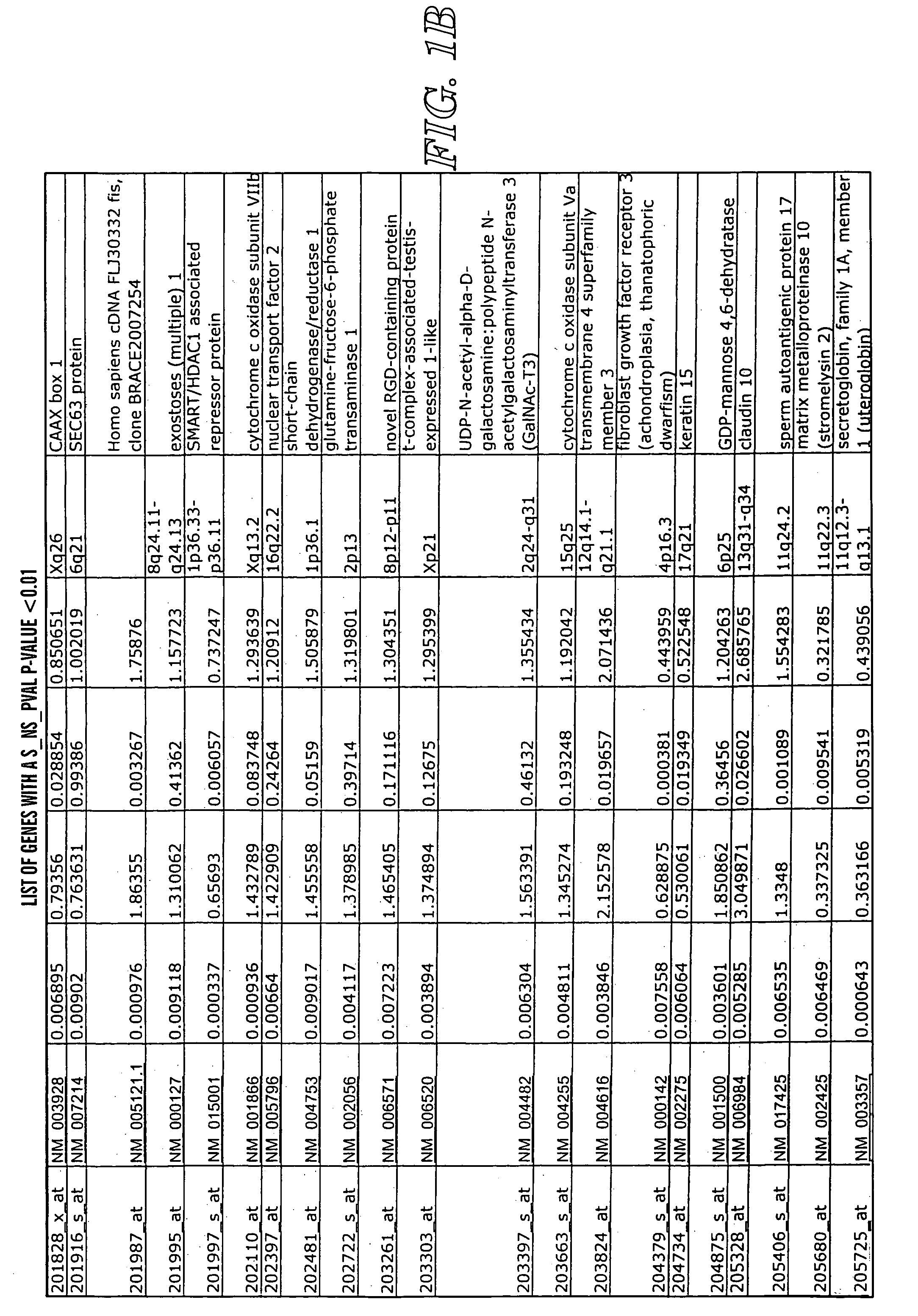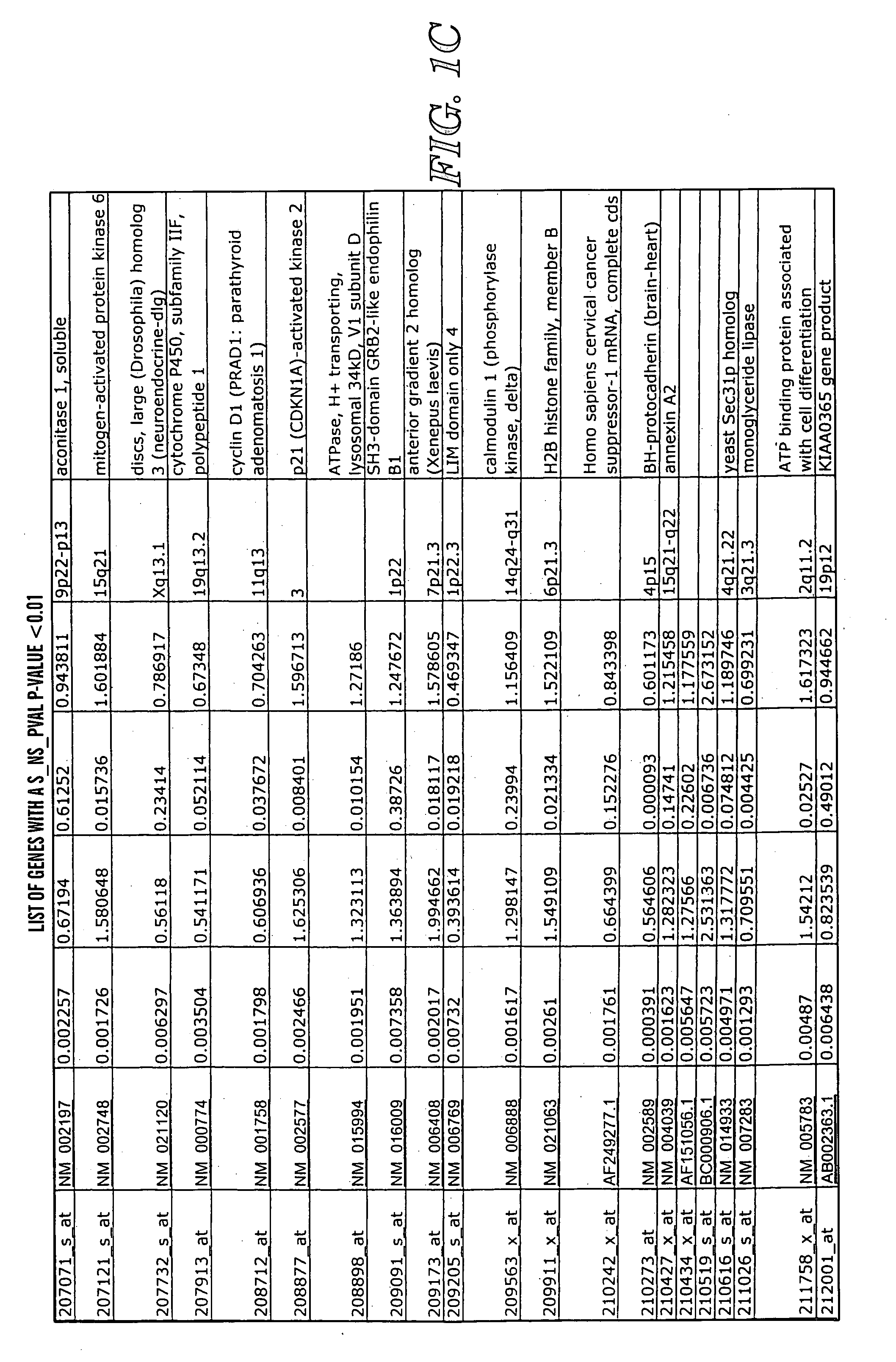Detection methods for disorders of the lung
a lung disorder and detection method technology, applied in the field of lung disorders, can solve the problems of serious lung disease risk to individuals, serious lung disease risk, and insignificant survival rate, and achieve the effects of xenobiotic and redox regulating genes, and reducing the expression of several tumor suppressor genes
- Summary
- Abstract
- Description
- Claims
- Application Information
AI Technical Summary
Benefits of technology
Problems solved by technology
Method used
Image
Examples
example 1
[0135] Primary lung tumors and histologically normal lung tissue were collected from the tumor bank of Brigham and Women's Hospital. Research specimens were snap frozen on dry ice and stored at −140° C. Each sample was accompanied by an adjacent section embedded in Optimum Cutting Temperature Compound for histological confirmation. The thoracic surgery clinical data-base was abstracted for details of smoking history, clinical staging and other demographic details. From the tumor bank, six cases of adenocarcinoma in life-time never smokers were selected and six cases of adenocarcinoma from cigarette smokers were then chosen for comparison by matching for the following criteria in a descending hierarchy of priority: (1) cell type; (2) histological stage of differentiation; (3) pathologic TNM stage; and (4) patient age (Table 1). All of the subjects except for one smoker were female. The collection of anonymous discarded tumor specimens was approved by the Brigham and Women's Instituti...
example 2
[0141] Methods. Samples of epithelial cells, obtained by brushing airway surfaces, were obtained from intra- and extra-pulmonary airways in 11 normal non-smokers (NS), 15 smokers without lung cancer (S), and 9 smokers with lung cancer (SC). 5-10 ug of RNA was extracted using standard trizol-based methods, quality of RNA was assayed in gels, and the RNA was processed using standard protocols developed by Affymetrix for the U133 human array. Expression profiles, predictive algorithms, and identification of critical genes are made using bioinformatic methods.
[0142] Results. There are 5169 genes in the NS Transcriptome, 4960 genes in the S Transcriptome, and 5518 genes in the SC Transcriptome. There are 4344 genes in common between the 3 Transcriptomes. There are 327 unique genes in the NS Transcriptome, 149 unique genes in the S Transcriptome, and 551 unique genes in the SC Transcriptome. FIGS. 1A-1F show a list of genes which are differentially expressed in smokers and non-smokers. F...
example 3
[0143] There are approximately 1.25 billion daily cigarette smokers in the world(1). Cigarette smoking is responsible for 90% of all lung cancers, the leading cause of cancer deaths in the US and the world(2, 3). Smoking is also the major cause of chronic obstructive pulmonary disease (COPD), the fourth leading cause of death in the US(4). Despite the well-established causal role of cigarette smoking in lung cancer and COPD, only 10-20% of smokers actually develop these diseases(5). There are few indicators of which smokers are at highest risk for developing either lung cancer or COPD, and it is unclear why individuals remain at high risk decades after they have stopped smoking(6).
[0144] Given the burden of lung disease created by cigarette smoking, surprisingly few studies(7, 8) have been done in humans to determine how smoking affects the epithelial cells of the pulmonary airways that are exposed to the highest concentrations of cigarette smoke or what smoking-induced changes in ...
PUM
| Property | Measurement | Unit |
|---|---|---|
| time | aaaaa | aaaaa |
| Temperature | aaaaa | aaaaa |
| pH | aaaaa | aaaaa |
Abstract
Description
Claims
Application Information
 Login to View More
Login to View More - R&D
- Intellectual Property
- Life Sciences
- Materials
- Tech Scout
- Unparalleled Data Quality
- Higher Quality Content
- 60% Fewer Hallucinations
Browse by: Latest US Patents, China's latest patents, Technical Efficacy Thesaurus, Application Domain, Technology Topic, Popular Technical Reports.
© 2025 PatSnap. All rights reserved.Legal|Privacy policy|Modern Slavery Act Transparency Statement|Sitemap|About US| Contact US: help@patsnap.com



